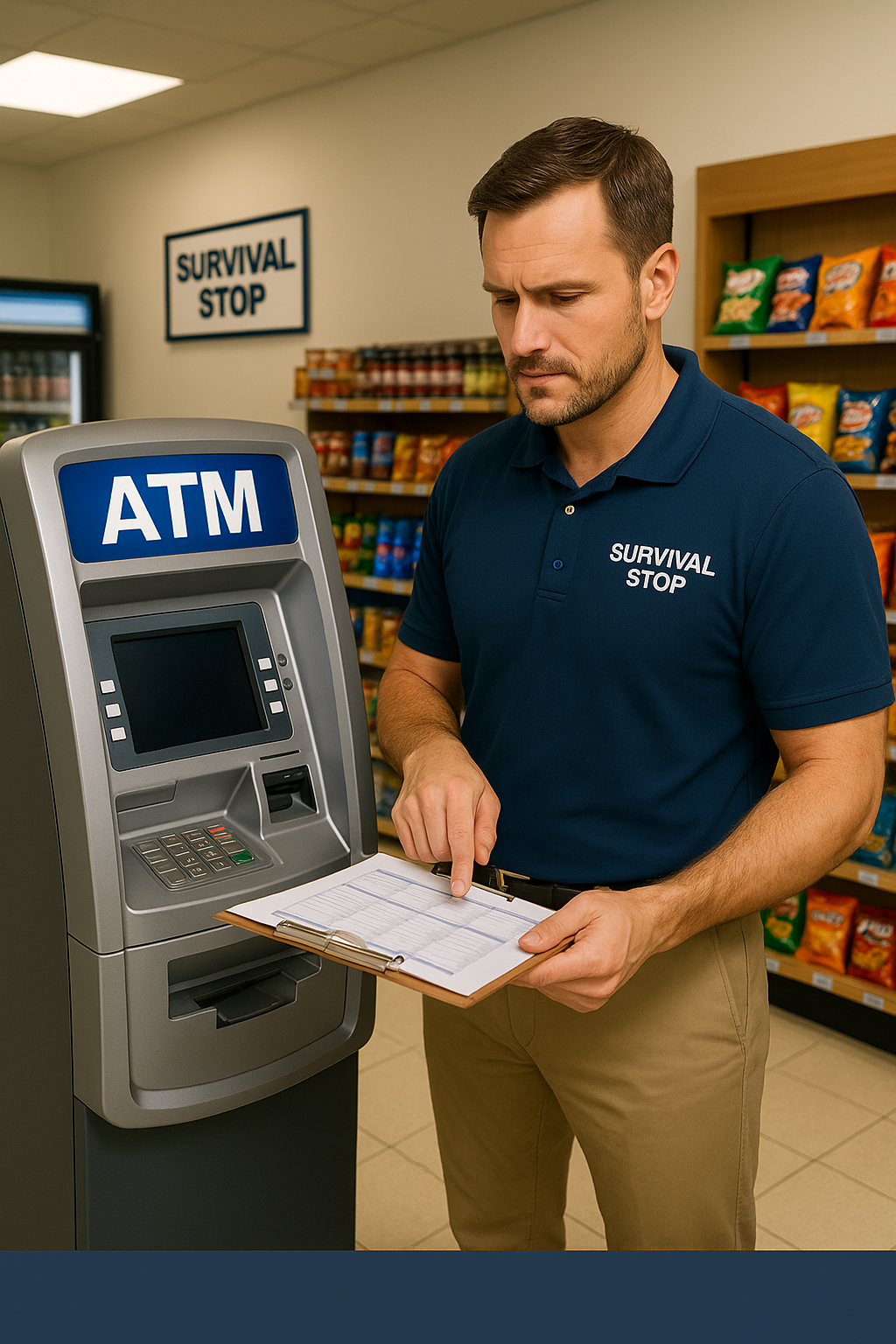Pros and Cons of Owning vs Leasing an ATM for Your Store
ATM placement decisions significantly impact customer traffic and profitability. Ownership retains 100% of surcharge fees but requires maintenance and cash management, while leasing offers simplified operations with reduced revenue through sharing agreements.

Independent convenience store owners face critical decisions about ATM placement that can significantly impact both customer convenience and long-term profitability. Understanding the implications of owning vs leasing an ATM for convenience stores requires careful analysis of revenue potential, operational responsibilities, and financial commitments that extend beyond simple monthly costs.
"I wish someone had explained the full picture when I first considered adding an ATM," says Rebecca Martinez, who operates two independent stores in suburban Denver. "The decision between owning and leasing affects everything from daily cash management to insurance coverage, and the financial impact compounds over time."
Industry data indicates that convenience stores with ATMs experience 15 to 25 percent higher customer traffic, but the revenue optimization depends heavily on the ownership structure chosen by operators.
Revenue Models and Financial Impact
ATM ownership structures create fundamentally different revenue streams that affect long-term profitability calculations. Full ownership enables store operators to retain 100 percent of surcharge fees, typically ranging from $2 to $4 per transaction, while also capturing interchange fees from financial institutions.
Leasing arrangements typically involve revenue sharing agreements where ATM service companies retain 50 to 70 percent of surcharge income in exchange for equipment provision and maintenance services. While this reduces immediate revenue per transaction, it also eliminates upfront capital requirements and ongoing operational responsibilities.
Michael Thompson, whose family operates three stores in rural Georgia, chose full ownership after calculating long-term revenue potential. "Our locations average 800 ATM transactions monthly, generating approximately $2,400 in surcharge revenue," Thompson explains. "Under a typical lease arrangement, we'd only retain about $800 of that income."
Service and Maintenance Considerations
Equipment maintenance represents a significant operational difference between ownership and leasing models. ATM owners assume full responsibility for routine maintenance, software updates, compliance modifications, and emergency repairs that can cost $150 to $500 per service call.
Leasing agreements typically include comprehensive maintenance coverage through service providers who handle all technical issues, compliance updates, and equipment replacements. This arrangement eliminates unpredictable repair costs while ensuring consistent ATM availability for customers.
Patricia Williams, who manages stores in urban Phoenix, emphasizes the importance of reliable service coverage. "We had three ATM breakdowns last year that required immediate attention during peak traffic periods," Williams notes. "Having 24-hour service coverage through our leasing agreement prevented significant customer frustration and lost revenue."
Liability and Insurance Implications
ATM ownership creates additional liability exposures that require specific insurance coverage and security protocols. Owners must provide adequate physical security, implement proper cash handling procedures, and maintain compliance with federal regulations governing ATM operations.
Insurance requirements for owned ATMs include coverage for theft, vandalism, equipment damage, and potential liability for customer injuries during ATM use. These policies typically add $1,200 to $2,000 annually to insurance premiums while creating additional administrative responsibilities.
Leasing arrangements often transfer primary liability to service providers who maintain comprehensive insurance coverage and assume responsibility for regulatory compliance. This transfer reduces owner liability exposure while simplifying insurance requirements and administrative burdens.
Cash Management and Operational Impact
ATM ownership requires sophisticated cash management systems that maintain adequate currency supplies while minimizing security risks. Owners must establish relationships with armored car services, implement proper counting procedures, and maintain detailed transaction records for regulatory compliance.
David Rodriguez, whose store serves a busy commuter corridor, describes the operational complexity of ATM ownership. "Managing cash levels requires constant attention to transaction patterns, holiday schedules, and seasonal variations that affect demand," Rodriguez explains. "Underestimating cash needs results in disappointed customers, while overstocking creates unnecessary security risks."
Long-Term Financial Analysis
Evaluating owning vs leasing an ATM for convenience stores requires comprehensive analysis of total costs over typical equipment lifecycles ranging from five to seven years. Ownership models often prove more profitable for high-volume locations exceeding 600 monthly transactions, while leasing arrangements benefit lower-volume stores or operators seeking simplified management.
The decision involves balancing immediate cash flow requirements against long-term revenue potential while considering operational capacity for managing additional responsibilities that ATM ownership creates.
For independent convenience store owners, the choice between owning and leasing ATMs depends on transaction volume projections, available capital, operational expertise, and risk tolerance levels that vary significantly across different business situations and market conditions.





